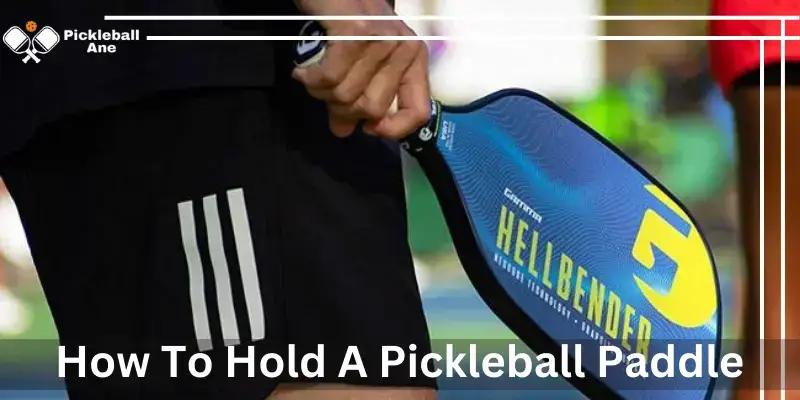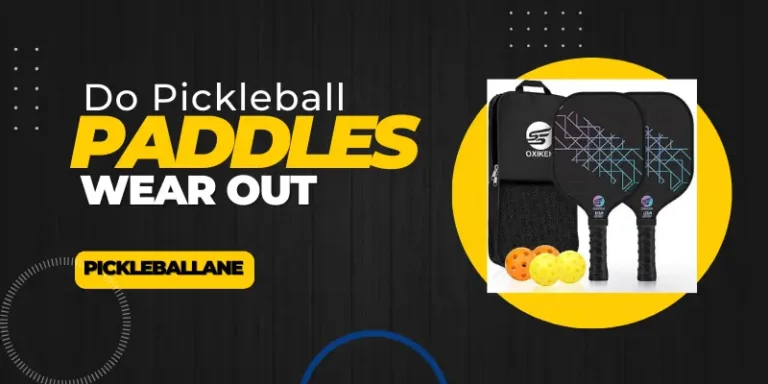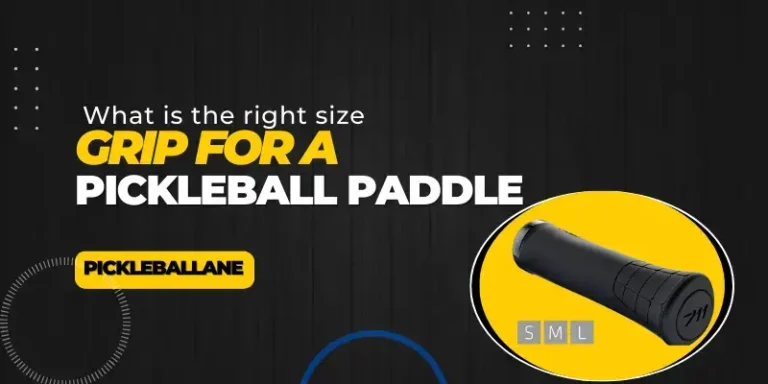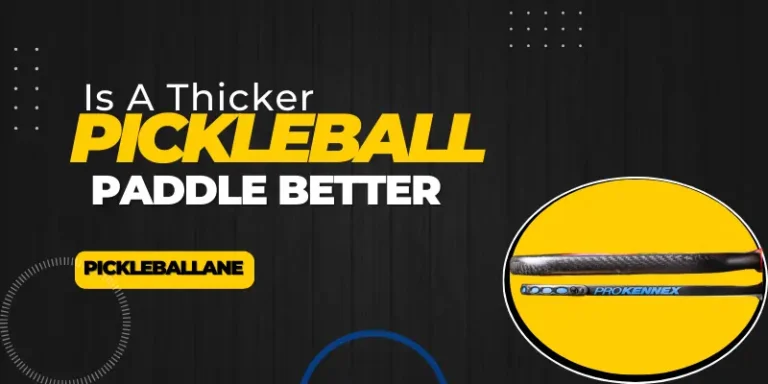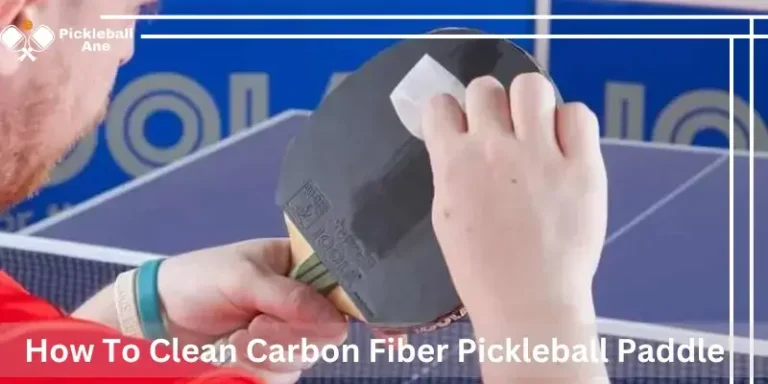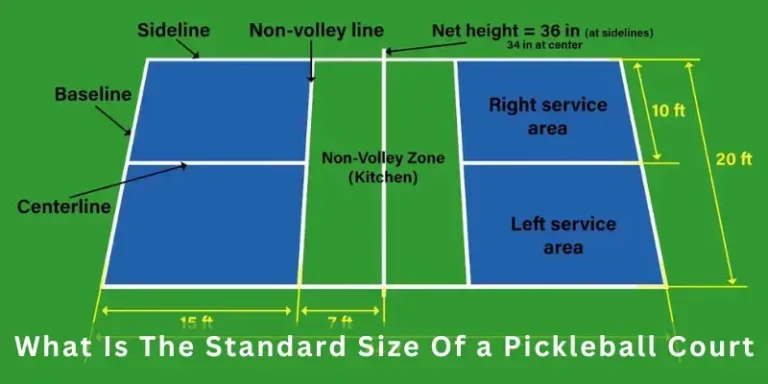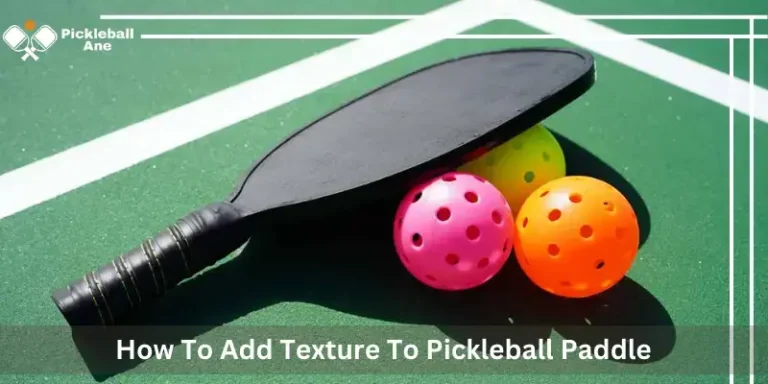How To Hold a Pickleball Paddle || Simple Guide
If you’re new to pickleball, one of the first things you’ll need to learn is how to hold a pickleball paddle.
To properly hold a pickleball paddle, start by gripping the handle with your dominant hand. Position your other hand on the opposite side for balance and control. Remember to keep a relaxed grip and adjust as needed during play.
In my experience, I have found that the way you hold a pickleball paddle can greatly affect your performance on the court.
It is important to find a grip that feels comfortable and allows for proper control of the paddle. Experiment with different grips to see what works best for you and don’t be afraid to adjust as needed during gameplay
In this article, we will go over the basics of holding a pickleball paddle and provide some tips to help you improve your grip for optimal performance on the court.
So Lets Get Started!
How To Hold A Pickleball Paddle: The Basics
Before we dive into the different grip styles, let’s first go over the basic steps for holding a pickleball paddle.
Determine your dominant hand
The first step is to determine which hand will be your dominant hand. In most cases, this will be the hand you write with or use for other sports. This will be the hand that you hold the pickleball paddle with.
Grip the handle
With your dominant hand, grip the handle of the pickleball paddle firmly but not too tightly. You want to have a relaxed grip that allows for flexibility and control during gameplay.
Position your other hand
Next, take your non-dominant hand and place it on the opposite side of the paddle for balance and control. This hand will be used to guide and support the paddle during play.
Adjust as needed
During gameplay, you may find that your grip needs to be adjusted. This is completely normal and it’s important to pay attention to how your grip affects your shots and adjust accordingly. You may also need to adjust depending on the type of shot you are making.
Different Grip Styles
Now that you know the basics of holding a pickleball paddle, let’s take a look at some different grip styles that you can try out.
Eastern Forehand Grip
This is the most common grip used in pickleball and is similar to the grip used in tennis. To use this grip, place your index finger on the paddle face with your thumb resting on the handle. This allows for good control and power when hitting forehand shots.
Continental Grip
The continental grip is often used for backhand shots and provides a lot of control. Place your index finger on the paddle face with your thumb on the top edge of the handle. This grip can also be useful for serving.
Western Forehand Grip
This grip is similar to the eastern forehand grip, but with a slight twist. Place your index finger on the paddle face, but instead of having your thumb on the handle, place it on the side of the handle. This grip allows for more spin and control.
Two-Handed Grip
Some players may find that using both hands to hold the paddle is more comfortable and provides better control.
In this case, grip the handle with both hands, with your dominant hand on top and your non-dominant hand on the bottom. This grip can be especially useful for power shots.
Finding Your Ideal Pickleball Paddle Grip
It’s important to find a grip that feels comfortable and allows for proper control of the paddle.
Every player may have a different preference when it comes to holding their pickleball paddle, so it’s important to experiment with different grip styles and see what works best for you.
In addition to grip style, the size and weight of your paddle can also affect how you hold it. Make sure to try out different paddles to find the one that feels most comfortable in your hand.
Top Tips for Holding a Pickleball Paddle Correctly
Now that you have a good understanding of the different grip styles and how to hold a pickleball paddle, here are some additional tips to keep in mind:
Tip 1: Relax your grip
It’s important to have a relaxed grip when holding a pickleball paddle. A tight grip can lead to muscle fatigue and decrease your control over the paddle. Make sure to periodically check and adjust your grip during gameplay.
Tip 2: Keep your wrists loose
Another key aspect of holding a pickleball paddle is keeping your wrists loose. This allows for more flexibility and a better range of motion when making shots. Keep your wrists relaxed and avoid locking them in place.
Tip 3: Practice, practice, practice
The best way to improve your grip is to simply practice playing pickleball! The more you play, the more you will be able to fine-tune your grip and find what works best for you.
Remember, it’s always okay to adjust your grip as needed during gameplay. Don’t be afraid to make changes and experiment with different styles until you find your ideal grip.
Common Mistakes in Holding a Pickleball Paddle
While there is no one “perfect” grip for holding a pickleball paddle, there are some common mistakes that many players make when it comes to their grip. Here are a few things to avoid:
Mistake 1: Gripping too tightly
As mentioned before, a tight grip can lead to muscle fatigue and decreased control over the paddle. Make sure to have a relaxed grip and only tighten your grip when necessary for certain shots.
Mistake 2: Holding the paddle too tightly against your hand
Make sure to leave some space between the paddle and your hand. Holding it too tightly against your hand can limit wrist movement and decrease control.
Mistake 3: Not adjusting grip for different shots
Different shots may require different grips, so make sure to pay attention to how your grip affects each shot and make adjustments as needed.
Mistake 4: Not practicing enough
Just like with any skill, practicing is essential for improving your grip and overall gameplay. Make sure to dedicate time to practicing your grip and trying out different styles.
Pickleball Paddle Grip Demos and Demonstrations
If you’re still unsure about how to hold a pickleball paddle, there are many online videos and tutorials available that demonstrate different grip styles and provide helpful tips. You can also watch experienced players in action and observe their grip techniques.
Additionally, if you have access to a pickleball coach or instructor, they can provide personalized demonstrations and feedback to help improve your grip.
Don’t be afraid to ask for guidance and tips from more experienced players – they may have valuable insights that can help improve your game.
Improving Your Game with Proper Pickleball Paddle Hold
Having a solid, comfortable grip on your pickleball paddle is crucial for playing your best game.
By understanding the different grip styles and tips for holding a pickleball paddle correctly, you can improve your control, power, and overall performance on the court.
Make sure to also regularly check and adjust your grip as needed during gameplay to ensure optimal play.
With practice and patience, you’ll be able to find the perfect grip for your playing style and elevate your pickleball game.
Conclusion
In conclusion, holding a pickleball paddle may seem simple, but it is actually a key aspect of the game that can greatly affect your performance.
It’s important to try out different grip styles and find what works best for you in order to improve control, power, and overall gameplay.
Remember to relax your grip, keep your wrists loose, and practice regularly to continuously improve your pickleball paddle hold.
With the right grip, you’ll be well on your way to becoming a skilled and successful pickleball player.
FAQs
How tight should I hold the pickleball paddle?
You should hold it with a firm but relaxed grip. Avoid gripping it too tightly to prevent tension and maintain better control.
Can I use the same grip for both forehand and backhand shots?
While possible, using different grips for forehand and backhand shots allows for more versatility and control on the court.
Is the Continental Grip suitable for beginners?
Yes, it is beginner-friendly and offers versatility for different shots, making it an excellent starting point.
Can the grip size affect my gameplay?
Absolutely! The right grip size ensures comfort and better control. A paddle with the wrong grip size can lead to discomfort and hinder your performance.
How can I improve my grip strength?
Regularly practicing and playing pickleball will naturally improve your grip strength over time. You can also incorporate hand exercises to enhance it further.
Should I consult a professional for grip-related issues?
Coaching or professional assistance can be highly beneficial if you face persistent grip-related issues.

